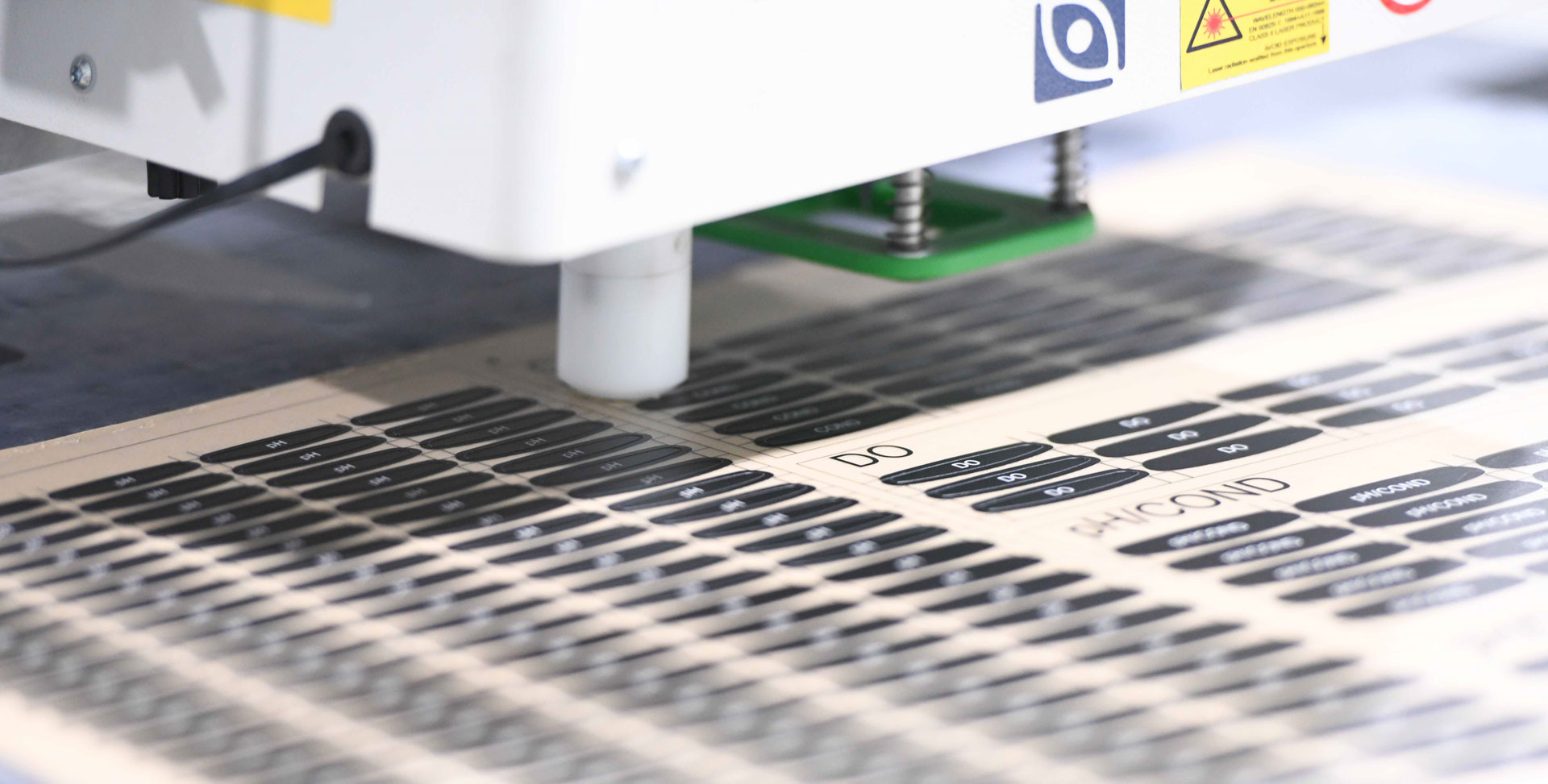Printing is commonly done in sheet/panel form, which means that multiple products are laid down onto one sheet of material. Typically, the size of a sheet is around 600mm X 450mm (18 X 24 inches).
Downstream operations cannot always be carried out in large sheet size and it is not uncommon to depanelize into smaller size subpanels to process through component mounting or lamination.
The final singulation is the process of separating/cutting individual parts from the panel or subpanel. Various techniques are available but can be divided into two main categories: tooling and digital. Our customers are often perplexed as to when and why to invest in a die or go with digital cutting. This article will shed some light on on the subject and offer some recommendations.
Tool Cutting
Eccentric punching/stamping presses are widely popular. They are economical, energy efficient and simple to operate. The principle is to convert the circular motion of a flywheel into vertical force.
Safety could be an issue and light barriers are the most common remedy to prevent operators from keeping their hands on the product when the tool closes. The tools are known in the business as “hard tools.” They are 2 or 4 columns male-female tools with machined punches. They are very precise (+/- 50 µm) and tend to be more expensive. They are also very durable with a life span of more than 1 million hits and the return on investment is purely dictated by the size of customer order. Tool design and manufacturing can take up to 3 weeks depending on the project complexity.
Hydraulic presses are used with “soft tools” also called steel rule die (SRD). Basically, the tool is comprised of three components: a wooden die board, steel rule cutting blades and rubber ejection. In some cases the wooden die board can be replaced with metal. Tolerances around +/- 0.2mm are not as good as with a hard tool. Production lead time will not exceed 3 days and cost is attractive.
Etched dies are also used with hydraulic presses and are made via chemical etching They are less expensive than hard tools but more expensive than SRD. They can produce parts with intricate details and tighter tolerances.
Digital Cutting
Digital cutting is precise and cost effective (no customized tooling needed). The cutting tool is either a laser beam, a router bit or a knife. CMI operates a blade digital cutter (knife) and two CO2 lasers with optical registration.
Typically digital cutting applies to prototyping but we also happen to run small volume production. Digital cutting has some inherent limitations with material nature and thickness and cut-out geometry (e.g. radius of curvature). Programming is done internally, which results in lower cost to the customer.
Digital cutting is becoming more attractive to many of our customers in an effort to lower the upfront tooling cost. While we promote digital cutting for small volume and prototyping, we also bring the customer’s attention to the unit cost and the implications to the total cost of a multi-year project.
Conclusion
Each project is different and that is why our approach is to accompany the customer along the product design and development process and provide assistance in making these decisions.

